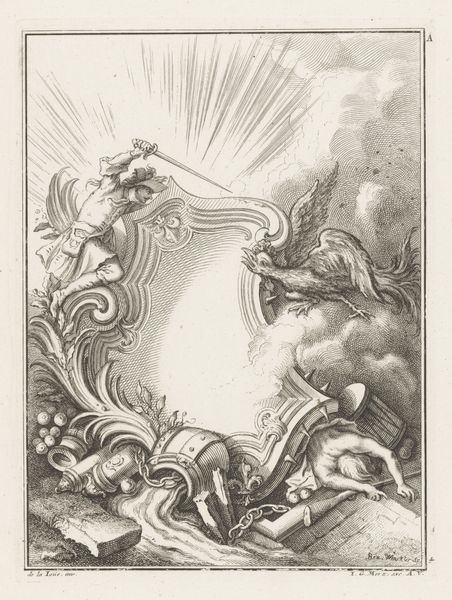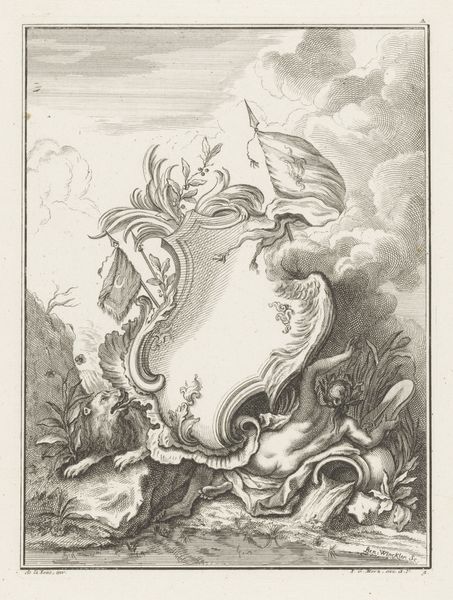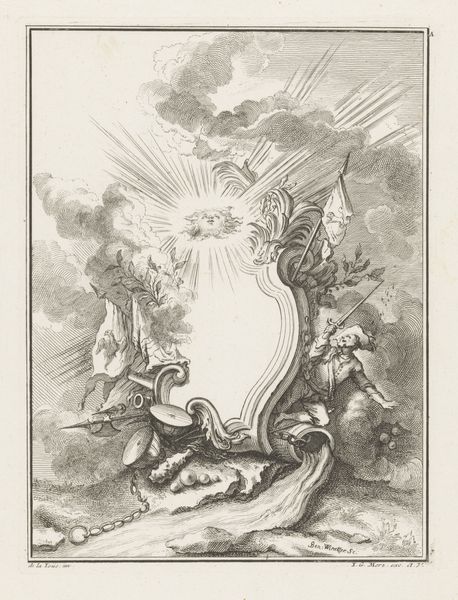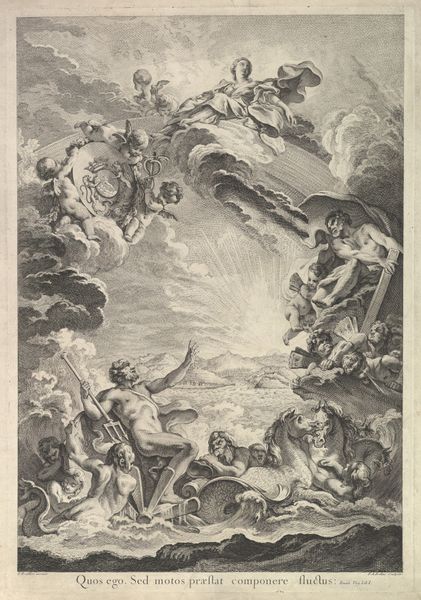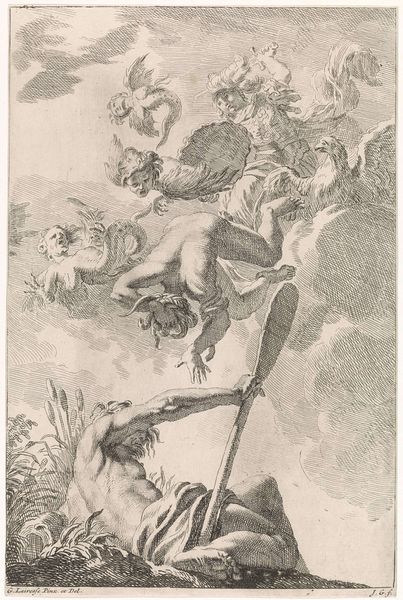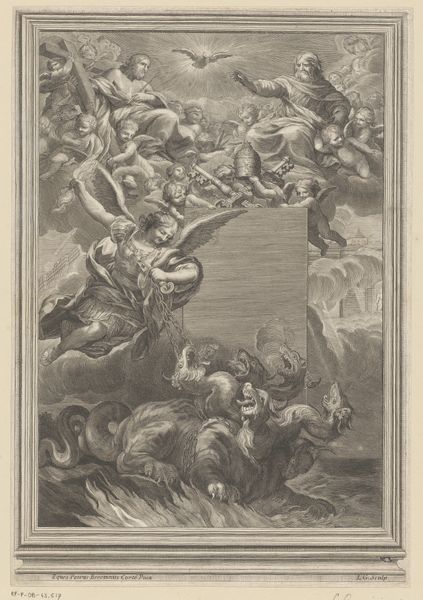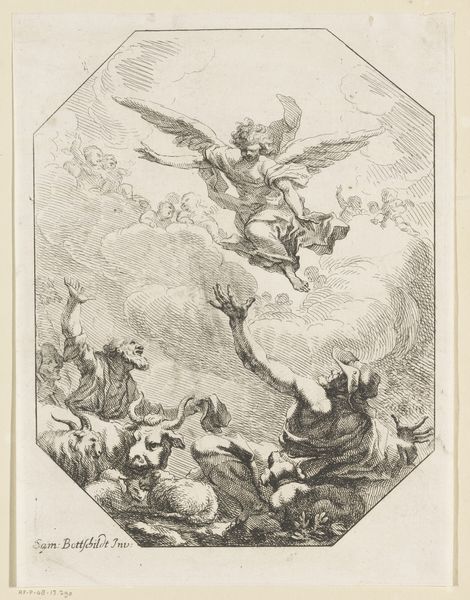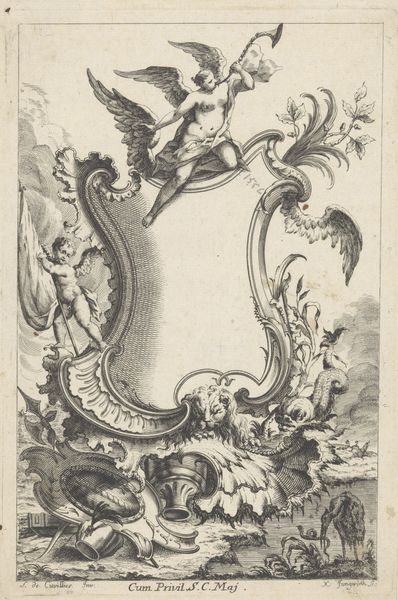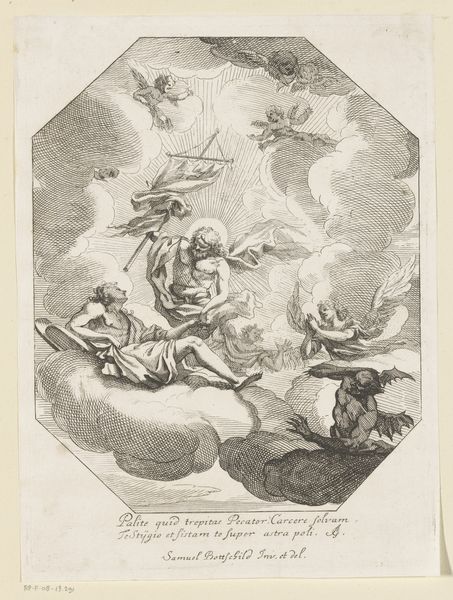
drawing, ink, engraving
#
drawing
#
allegory
#
baroque
#
figuration
#
ink
#
horse
#
engraving
Dimensions: height 246 mm, width 183 mm
Copyright: Rijks Museum: Open Domain
Curator: This is Benedikt Winkler’s "Cartouche met paard," an engraving dating from 1750-1762, here at the Rijksmuseum. Editor: What strikes me immediately is the chaotic energy contained within this highly ornate frame. The swirling waves, the struggling figure, it all suggests a drama unfolding. Curator: Exactly! Note the mastery of line in creating texture. The waves, the horse's mane—see how ink and paper serve to create form and motion through purely tonal arrangements. Editor: And the labor involved in achieving this level of detail is remarkable. The controlled process, engraving minute lines to suggest water or the muscled tension in the horse. It speaks volumes about artistic production during the Baroque era. What would a cartouche like this have been used for? Curator: It’s thought that designs like these were likely intended as templates for other artworks or decorative elements; offering artisans and craftspeople models for their work. You see the bare cartouche in the center waiting for some noble portrait or royal seal. Editor: So it was a mass-produced object intended for unique applications, mediating the space between the creator, Winkler, and whoever would finally determine the piece's ultimate meaning and use. Were prints such as these readily accessible? Curator: Relatively so, compared to original paintings. They democratized design, bringing elaborate imagery into a wider sphere of influence. Consider the skill and access required to make or own the kind of art that this image signifies or the ability of the lower artisans that used such "templates" to then imitate it and elevate their designs. Editor: Yes, precisely. Thinking about the material process contextualizes how aesthetics circulated and became integrated into daily life. I find it incredible how Winkler manages to convey the essence of a period so precisely. Curator: Indeed. Winkler captures something essential. He does it via visual means and within a structure whose logic offers much interpretive potential. Editor: It is fascinating how deeply technique and material can be entangled with cultural and aesthetic shifts. Curator: Quite. Thank you for this illuminating insight on "Cartouche met paard," seeing it from your perspective really adds to our appreciation of this intriguing Baroque piece.
Comments
No comments
Be the first to comment and join the conversation on the ultimate creative platform.
